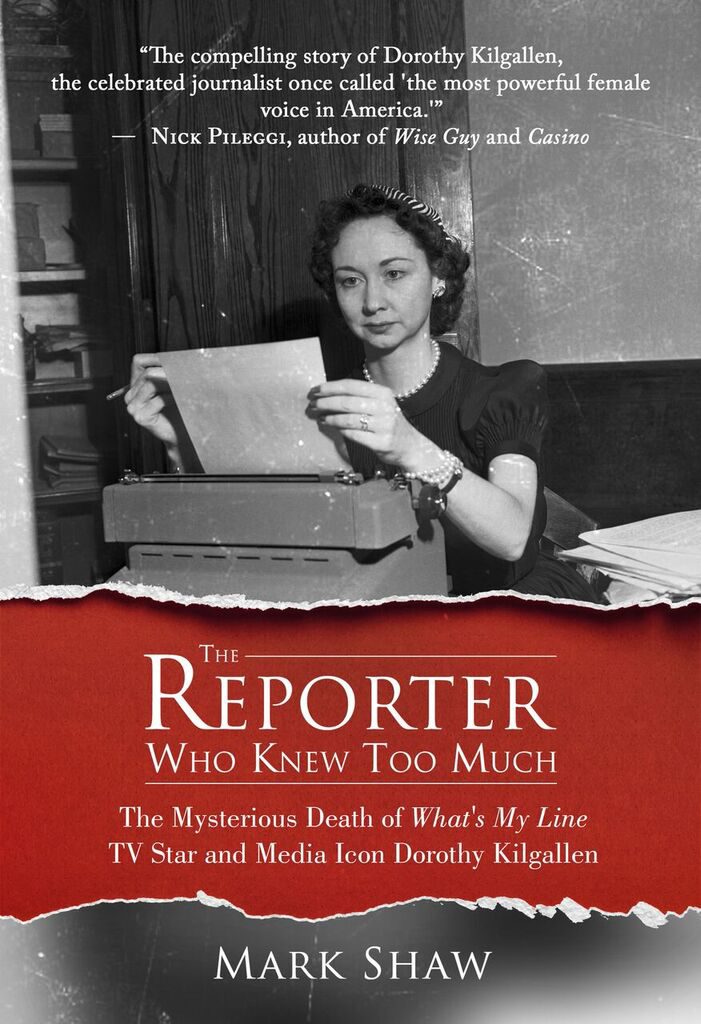
The night before she died, Dorothy Kilgallen participated in the television show “What’s My Line” and correctly guessed the contestant’s occupation. The young woman sold dynamite.
Kilgallen, a crack investigative and crime reporter, was sitting on a stack of dynamite herself – her research on the JFK assassination. Before the new day broke, it cost Kilgallen her life. That’s what Mark Shaw thinks. He recently published a new book, The Reporter Who Knew Too Much: The Mysterious Death of What’s My Line TV Star and Media Icon Dorothy Kilgallen. Based on several years of research, the book offers new evidence that’s never been revealed before.
Finally, an investigation – 51 years later
Did DorothyKilgallen’s knowledge of the JFK assassination lead to her murder? Shaw’s book has convinced the Manhattan DA’s Office to open an investigation into Kilgallen’s death – 51 years later!
Mark Shaw joins us today to tell us why.
A former criminal defense attorney and legal analyst for CNN, ESPN, and USA Today for the Mike Tyson, O.J. Simpson and Kobe Bryant cases, Mark Shaw is an investigative reporter and the author of 20+ books whose latest is The Reporter Who Knew Too Much. You can learn more about the book by clicking on the book title or watching Mark Shaw’s book-signing presentation.
Welcome, Mark Shaw!
Most people know Dorothy Kilgallen as a “What‘s My Line” panelist, but she was equally well known as a crack investigative and crime reporter. What famous crimes did she cover?
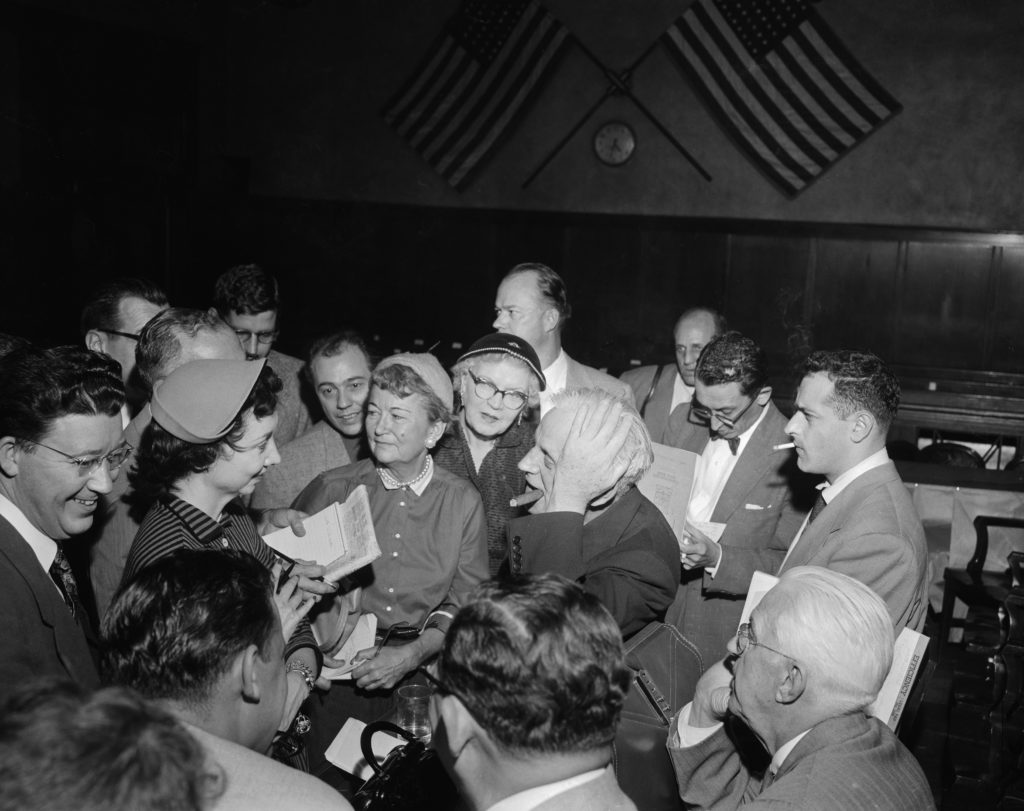
In addition to her What’s My Line? fame, Dorothy covered many of the most famous criminal cases of the 29th century, the Lindbergh baby kidnapping case, the Profumo Scandal in England, the Dr. Sam Sheppard murder trial, the Lenny Bruce 1st Amendment case and most importantly, the Jack Ruby trial.
Her columns won her a few significant enemies….
Dorothy was a woman of the truth and her New York Journal American column, syndicated to more than 200 newspapers across America, could make or break the career of a celebrity and this led to her having enemies that included most prominently singer Frank Sinatra. When she ridiculed him for the “bimbos” and “has-been” girlfriends he paraded around with, he responded by calling her “the chinless wonder,” making fun of her appearance. He also sent a fake tombstone to her office.
How influential was she as a reporter?
There is not a media personality today who can match the journalistic career that Dorothy enjoyed for nearly three decades. Besides being nominated for a Pulitzer Prize, she was arguably the most trusted reporter in the world which permitted her the best sources for her stories. This led to an astounding number of “scoops,” including being the first reporter who expose JFK’s affair with Marilyn Monroe and later, being the only reporter to interview Jack Ruby at his trial and then expose his Warren Commission testimony before it was to be released. During her era, people got most of their news from newspapers and she was, as the New York Post proclaimed, “The most powerful female voice in America.”
What stance did Dorothy Kilgallen take on the JFK assassination? And how might that have been connected with her death?
Dorothy launched an 18-month investigation of the JFK and Oswald assassinations and without doubt, it is the most extensive investigation of those events in history. She was there when it all happened and at the Ruby trial so she is a true eyewitness to history. In the fall of 1965, she was about to include her belief that the assassinations were simply “Mafia hits” start to finish based on motive, that New Orleans Don Carlos Marcello had masterminded the assassinations based on revenge against the Kennedy’s. As November arrived, she was getting ready to complete a book for Random House exposing the truth and those threatened by it could not let her live.
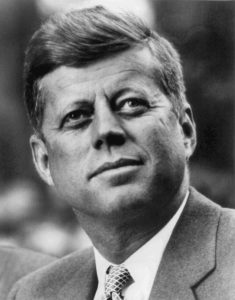
Do you think she was murdered?
The official cause of death, accidental due to a combination of an overdose of barbiturates and alcohol is flawed based on the primary evidence presented in the book. She certainly did not commit suicide and that leaves murder as the logical choice as to how she died. This said, since this book is true crime murder mystery, readers should make up their own minds based on the book content and watching the more than 50 videotaped interviews with those who knew her best at www.thedorothykilgallenstory.org.
Did her JFK assassination research file disappear with her death?
Yes, this is one of the many mysteries connected to Dorothy’s death that readers around the world have debated through the more than 175 Amazon reviews and emails I have received from both the US and countries such as Japan, Australia, and even Iceland. I’m pleased to say the book is in its 6th printing with a film in development in LA that will focus on Dorothy’s life and times, and her death.
Wow! Congratulations. I want to see the film when it comes out.

Was the file ever found again?
No, but I believe it still may be out there somewhere and recently fresh evidence has been forwarded to me by a person close to Dorothy’s family as to the possible whereabouts of the file. We are following up on that information.
How would Kilgallen’s murderer have known where to look for the file? Didn’t she die on a different floor of the house than the floor where she kept her file?
Dorothy never made a secret of her intention to expose the truth about the JFK and Oswald assassinations and this contributed to her death. It was common knowledge that she always kept the file close to her and shared it with no one but as November 1965 neared, she told her hairdresser Marc Sinclaire that she was “afraid for her life and for her family,” and a second hairdresser Charles Simpson that “if the wrong people knew what I know about the JFK assassination, it would cost me my life.” They did know, and it did cost her her life.
If I were in Dorothy Kilgallen’s shoes, I wouldn’t have left my file around the house without having made copies for protection. I’d have put one copy in a safe deposit box, for instance, and given another copy to my attorney with instructions what to do with it in the case of my untimely demise. Is there any indication that she took those precautions? She took a trip to Switzerland before her death and at least one acquaintance thought she had a safe deposit box there. Has anyone checked to see if a Swiss safe deposit box might hold a copy of the file?
You have to remember that there were no copy machines back then and so it would have been a carbon copy that might have been in existence. This said, there is no credible evidence that any copy of the file existed. There is also no credible evidence that she took any copy to Switzerland or gave a copy to anyone.
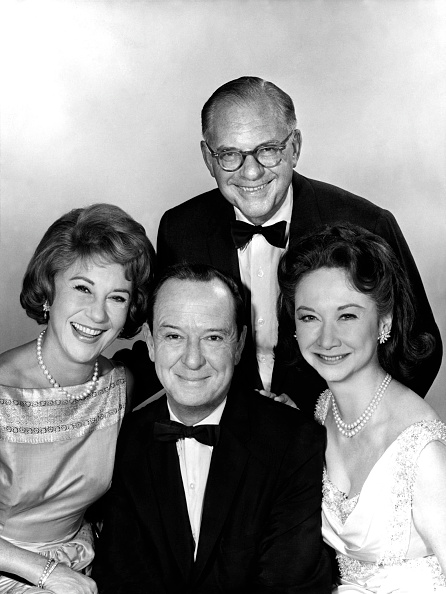
Tell us about the new investigation into Dorothy Kilgallen’s death.
After I requested that NYC District Attorney Cyrus Vance, Jr. investigate Dorothy’s death (not re-investigate since there was no investigation in 1965 despite a staged death scene and other evidence pointing to a homicide), the NY Post reported that the DA had opened an investigation into her death 52 years later. I have subsequently been working with the DA’s office by forwarding fresh evidence that will assist with the investigation but I’d like to see the investigation proceed more quickly than it has since as the victim of a homicide, Dorothy has rights and I am fighting to make sure she gets the justice she deserves that was denied her so many years ago.
Thank you, Mark Shaw!
Do you think a new investigation is warranted, 51 years later? Please comment below.
A 2018 update: The Dorothy Killgalen story is being made into a movie!
And Mark Shaw’s book forms the basis of the film. That’s a movie I’m putting on my list to see.
Click here for the latest on the new film.
More books by Mark Shaw
Mr Shaw has also written The Poison Patriarch, Miscarriage of Justice, Beneath the Mask of Holiness, Melvin Belli: King of the Courtroom, Stations Along the Way, and Down for the Count. He has penned articles for The New York Daily News, USA Today, Huffington Post and the Aspen Daily News, which he co-founded. More about Mr. Shaw, who lives in the San Francisco area, may be learned at markshawbooks.com and Wikipedia (Mark William Shaw).
Literature on point:
Susan Edelman, “Manhattan DA’s Office probing death of a reporter with possible JFK ties,” New York Post (Jan. 29, 2017).
Mark Shaw, The Reporter Who Knew Too Much: The Mysterious Death of What’s My Line TV Star and Media Icon Dorothy Kilgallen (Post Hill Press, 2016).


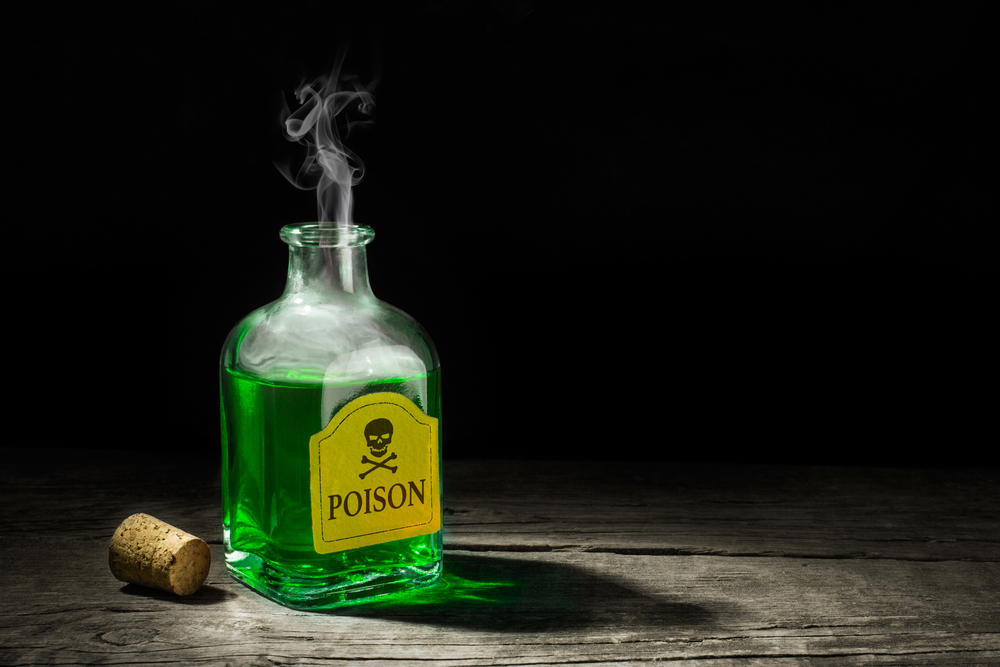

I’m curious about how many people knew she had this file–which must have been physically quite large– in her home. Did she confide this to only a few intimates, or–as seems to be the case–did she virtually put up a billboard saying, “Hey, I’ve got the goods on the JFK Assassination!”
This sounds like a great book; can’t wait to read it.
It is a great book — anything that convices a DA’s Office to open an investigation 51 years later must be.
She was writing a book for Random House and her most famous cases, and I think that was common knowledge. And those close to her did know about the file. She published several articles about the JFK assassination and became the only reporter to refute the “Oswald alone” theory. Any of those things might have tipped the public off that she had a research file somewhere.
Thank you for the question. On the one hand, Dorothy did not share her JFK and Oswald assassination file with anyone as she kept it with her at all times but on the other she told many people, perhaps too many, of the investigation with remarks such as something like, “I’m going to crack the case wide open.” Also, as you will read, she told one hairdresser, also a close friend, “If the wrong people knew what I know about the JFK assassination, it would cost me my life.” They did, and it did.
Do you think that if Dorothy Kilgallen had kept her own council about the Jack Ruby interview; she’d have survived?
That’s an interesting question. Maybe. If the theory here is correct, she lost her life because she knew too much and somebody found out she knew too much. Thanks for commenting.
Hello Mr. Shaw:
Didn’t I hear you say, or perhaps I read it somewhere, that her assistant, or somebody connected directly with Dorothy’s investigation of the JFK murder, was also murdered the same night as Dorothy Kilgallen?
Did I get that information correct?
Dorothy was murdered.
In fact, Mr. Shaw, no one was allowed to question the Warren Commission Report for over two years on corporate television.
After watching Oliver Stone’s new movie, JFK Revisited, there is no doubt in my mind, Ms. Kilgallen got a little too close to some critical truths concerning JFK’s demise in Dallas.
As you know, Mr. Shaw, Dorothy was the ONLY prominent reporter in American journalism to investigate JFK’s assassination.
David Talbot interview Ben Bradlee, JFK’s good friend in Washington, and Bradlee said it was too dangerous to one’s career in journalism to do any real research into JFK’s death.
In essence, the national media were a bunch of cowards.
But Dorothy Kilgallen’s strange death, in November 1965, confirmed to them that the JFK story was simply too dangerous to pursue.
So, not one single national journalist investigated the JFK murder — except for Dorothy Kilgallen.
Mr. Mark Shaw has done a remarkable job writing about her life and career.
I know that if I possessed something that caused me to be in fear for my life, I wouldn’t be telling people except possibly a family member I knew for sure I could trust. She was such a bright person, I wonder why she put herself in jeopardy by sharing these secrets.
How very true, Sheila. It’s quite possible that she made her remarks about cracking the case wide open before she knew how dangerous it was. Either way, one of the people she did trust and confide in betrayed her. If you read the book, you’ll see that Mark Shaw has a pretty good idea who it was.
Sometimes the best protection when you have sensitive information lies in sharing that information with a few key people (newspaper editors, etc.) or trusted people around you. Knowing she had spoken out would make it harder for any act of retribution by her enemies to be viewed as a way to guarantee the digging and searching would stop, no? I agree that running around talking about “cracking the case wide open” without sharing any details could be very risky. But if she *did* share some of the results of her investigation, might she perhaps have seen that an insurance policy that would help keep her safe? Can’t wait to read your book, Mr. Shaw. (Late artist Howard Brodie, whose artwork is featured in my book with Elizabeth Williams, The Illustrated Courtroom: 50 Years of Court Art, drew the Jack Ruby trial.)
That’s an interesting point, Sue. I think Dorothy avoided telling people what she knew to gain the trust of her sources. Weighing the choices between protection and cultivating one’s sources would be oh-so-difficult in this situation. Who could say what was the right thing to do? But in the end, it’s obvious Dorothy made the wrong choice.
Sue –
Thanks for the comment. First, I’m going to check out your book. Sounds quite interesting.
Re Dorothy sharing her JFK assassination evidence, she was quite the private person and trusted very few people, even those who were part of the inner circle she trusted. Very few, perhaps the two hairdressers who speak about her at length in the videotaped interviews noted in the book and available at http://www.thedorothykilgallenstory.org, and Mark Lane, an author who called her “the only serious journalist” investigating the assassinations. As you will read, she also trusted a journalist named Ron Pataky, who is a chief suspect in her death.
Unfortunately, it’s apparent that Dorothy believed she was invincible, that no one could harm her. When you read the book, you will see that she did fear for her life and in fact, purchased a gun but that otherwise she didn’t realize the danger, that she had a target on her back, that those who knew she was going to expose in her book for Random House of being involved in the JFK assassination had decided that book could never be published. Regarding her file, the one that disappeared, new evidence permits me to say that the file may still be recovered and I’m hopeful that the NYC DA will assist with finding it.
I have read many blogs about Mr. Shaw’s Kilgallen book as well as comments that react to the blogs. I must point out something that nobody has mentioned.
Do people realize that during the year Kilgallen died, 1965, most people who worked behind the scenes at New York City daily newspapers were Caucasian males who smoked and drank a lot? They also were sedentary all day, rarely exercised and ate terrible diets.
I can explain why this is relevant. Kilgallen’s employer, the New York Journal-American, was no exception to that pattern of lifestyle choices that belonged to a different planet than Jack LaLanne’s planet. (Please google him if you don’t know who he was.)
Because of lifestyle choices in 1965, nobody who worked with Kilgallen at her newspaper lived long enough for Mark Shaw to question them about how loudly she allegedly was shouting that she had a scoop on Oswald / Ruby.
Those guys did not even live long enough for Lee Israel to question them in the 1970s when she was getting paid to look for people and to question them. People who “died on her,” so to speak, included Journal-American columnist Bob Considine, not seen on national television (hence I consider him “behind the scenes” in contrast to Kilgallen’s presence on TV and in Pajama Party) and the Journal-American’s managing editor, Paul Schoenstein.
Review the Israel book and you find that in the mid 1970s, Bill Hearst was alive and still working for his family business, and he showed up at “an overpriced French restaurant” at Lee’s request. As soon as she mentioned Dorothy’s name, Mr. Hearst got up and walked out of the restaurant.
So Lee did have access to an important person who had been relevant to Dorothy’s career. But he refused to discuss her, possibly because he did not actually know anything about her death and he was mindful of Schoenstein and others who had gotten old, fat and then silent.
It is admirable that 1960s newspaper guys were very cautious with commenting to strangers about a ladylike female co-worker they admired, especially considering that none of them witnessed anything at her home on that mysterious Monday morning / afternoon in 1965.
As newspaper writers and editors and publishers, either they investigated a story or they didn’t, and if they didn’t, they never commented or speculated to strangers. Caucasian guys at newspapers were like that in the 1960s and remained that way until they died.
Unfortunately, the cigarette smoking, bad diets, lack of exercise and alcohol blocked them from reading the Israel book or the Shaw book and blocked them from knowing that the district attorney eventually was going to express interest.
Every journalist automatically considers a district attorney investigation to be newsworthy, but unfortunately the lifestyle choices in 1965 limit that investigation to people who were not alive in 1965 or, if they were alive, they were clueless kids living far away from Manhattan.
Does anyone here recall reading elsewhere about the ongoing silence of people who worked at the New York Journal-American in 1965, and their inability to help us put in perspective Dorothy’s opportunity to publish a scoop? This may be the only online reference to the unfortunate issue.
I wish the best for Mr. Shaw and the district attorney investigators, and I also wish longevity for us all so we can get to the bottom of this mess with James Comey.
Maybe it was a blessing that thousands of newspaper journalists were laid off after the launch of Google. Many of them led unhealthy lifestyles anyway, and they introduced their readers to news stories that they never explained to everyone’s satisfaction. Newspaper readers either got angry that they were left hanging or they were too cynical to care about one more example of corruption or crazy behavior.
By the time Google was launched, few young people read newspapers because they had grown up with cynicism — “Everyone who is rich or a government employee is a crook.” We shall see how much closure we get from history books that cover the turbulent 1960s. Who betrayed the American public then? Was a seemingly ordinary newspaper film critic named Ron Pataky part of a murder plot? I hope all of us live long enough to get closure with that issue.
Thanks for your long comment, Wendell. I didn’t know that Bill Hearst refused to speak to Lee Israel. I really can’t speculate as to why, however. But one thing is sure: Dorothy Kilgallen’s colleague’s silence on the matter is disturbing.
I agree with you that it would be nice to see closure for some of these issues, but I can’t agree that newspaper journalists getting laid off due to the popularity of the internet was a good thing. A professional journalist can bring so much more depth to a story than the average internet author can.
I’ll ask Mark Shaw to respond to your comment as well because you raise some interesting issues.
Bill Hearst’s brother Randolph, known as “Randy” to the many newspaper employees who liked him, was often credited as publisher of the New York Journal-American.
We have no evidence that Lee Israel ever approached him. Unfortunately, if she had, he probably would have ignored her. It is well-known that when Patty, daughter of Randy and Catherine, was kidnapped in February 1974, the parents’ lives were never again private. The federal trial in 1976 was particularly awful for the parents as their privacy was constantly invaded.
I’ve heard that Dorothy’s secretary died 2 days after her death.
I would be interested to know who the secretary was and any details about her death. ???
Tha’s interesting. I don’t know anything about the secretary, but I’ll ask the author to comment.
Reply to T. A. Standish :
The Kilgallen angle of the JFK conspiracy is based on factual details from the death scene and the medical examiner’s office (a medical examiner who worked in Brooklyn signed the death certificate, etc.). The mysteries that surround her include enough facts so they can be established as genuine mysteries, not conspiracy theories.
Unfortunately, a few falsehoods have trailed alongside the facts since the launch of Google in 1999. One of the falsehoods is that Dorothy’s secretary died two days after her death. The truth is that the day after Dorothy died, not two days later, her friend named Florence Pritchett Smith died following a long battle with leukemia.
The allegation that Dorothy shared her JFK information with Florence originated with one of the first conspiracy theorists. His name was Penn Jones. Had he contacted a loved one or friend of Florence Pritchett Smith, he would have learned that she had been so sick for such a long time that she had planned her own funeral service. Therefore, even if Dorothy had been too busy to know about her friend’s condition, she could not have walked to her friend’s deathbed and waved documents in front of her.
Florence never was Dorothy’s secretary. (The confusion over what Florence did for a living, the facts of which can be found in her several newspaper obituaries, might be the result of the mostly male conspiracy theorists of the 1960s and 1970s assuming Florence was a secretary.) Dorothy did have a private secretary. You can see video of her in a 1957 What’s My Line episode on You Tube. The mystery guest is movie / television anthology actor Robert Montgomery, father of Elizabeth Montgomery. This is how you easily can find the video of Myrtle.
Myrtle survived her boss by nine years and two months. During that time she had trouble finding another steady job, lacked a retirement fund, and declared bankruptcy. She had no surviving loved ones. Myrtle died of natural causes on January 10, 1975 in a Manhattan hospital that accepted patients without money or health insurance.
Her funeral service and cremation were arranged a friend who, when contacted many years later, said she thought Myrtle’s boss Dorothy had been strictly a gossip columnist. Why was she contacted by someone who was interested in the president’s assassination.
Thanks for such a detailed comment, Kathleen. I myself am not an expert on Kilgallen and can’t enter the debate on the varacity of these details. But my hope is that the discussion will help clear up misunderstandings and bring more facts into the proper light.
Wasn’t there some speculation she was hit in the head from an object accidentally falling (flowerpot etc) on the sidewalk passing a high rise.
Thanks for commenting, Jay. I can’t recall anything like that. Did the autopsy report even mention a head injury?
Jay Siebert: You’re confusing Arlene Francis with Dorothy Kilgallen. A small dumbell that Francis used for exercising fell from the window sill of her apartment and hit a passerby, killing him.
Thanks for the clarification, George!
Copiers were readily available rented by Xerox in 1960, so there could have been copies made of Dorothy’s notes.
Supposedly her fellow columnist and friend, wife of the former US Ambassador to Cuba had a set and possibly Dorothy’s husband as well.
Maybe. Copiers weren’t very common, but as a journalist, Dorothy might have had access. Who would have the copy, though?
One thing to me that I have not found mention of, Perhaps I missed this and it is known. 1960 John Daly married the second time to Virginia Warren. She is the daughter of Earl Warren ~ the Earl Warren from the CIA who JFK fired then Hoover had reinstated and in charge of the Warren report. There are so many possibilities if this is a true correct fact. I have studied the JFK case for decades but only very recently started seriously digging into Dorothy involvement, aside the around 200 deaths related there are also many “high profile” deaths to be added to the large picture of this American story. Which are still in action today in federal and local government.
That’s interesting, Eric, and thanks for commenting. I will ask the author for his take on it.
Thank you for pointing out the John Daly connection to the Dorothy Kilgallen mystery. I have been aware of that for some time, but have never, through my research, confirmed it had anything to do with either her coverage of the JFK assassination or her death. If you uncover evidence to the contrary, please let me know so that I may include it in my new book, “Collateral Damage: The Mysterious Deaths of Marilyn Monroe and Dorothy Kilgallen and the Ties that Bind them to Robert Kennedy and the JFK Assassination.” Book to be published in April, 2021.
What do you mean by saying there were no copy machines back then? Xerox machines had been on the market for years, and it would have been a simple matter for her to run off duplicates.
Interesting comment. They may have been around, but I personally never saw a xerox machine until the late seventies. My schools in the sixties and seventies used ditto machines to duplicate everything. I don’t think xerox machines were very common before then. Do you know? Thanks for commenting.